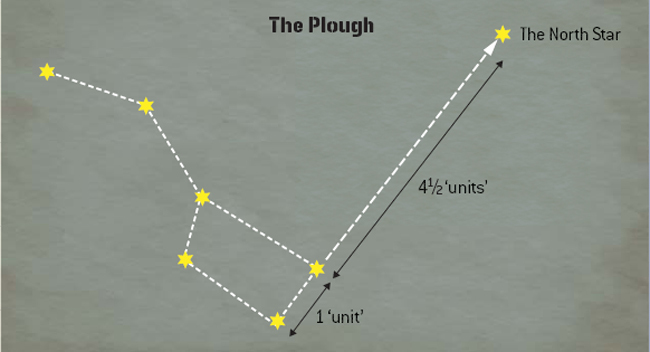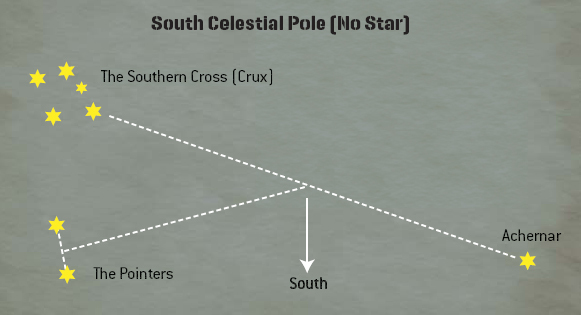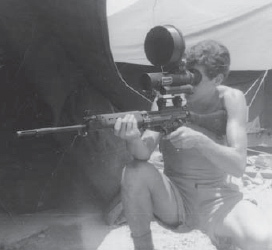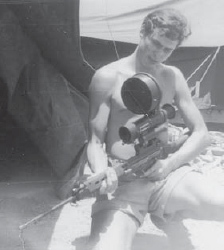
Even though it revolves around the North Star, the end two stars in the Plough always point directly towards the North Star and remain around 4½ times their distance apart from it. There is one problem with using the North Star for direction: when it is daylight or cloudy you can’t see it.
South of the Equator: Here you cannot see the North Star and there is no such thing as a ‘South Star’. Fortunately there is a cluster of stars called Sigma Octantis, which circle the South Point. If you cannot see these, and they are pretty faint, there is another group of stares called the Crux. Remember: that all these stars circle the South Pole position (where the dotted lines meet in the diagram on p.109) every night just like the Northern group. So you might be looking for them upside down.
Finding north using the sun: North or south of the equator you can use the sun to find direction. In the Northern Hemisphere, if you have a wristwatch with fingers, point the hour hand towards the sun. South is halfway between the hour hand and ‘12’ on the dial. North is exactly the other way. For the Southern Hemisphere reverse this entire procedure. This technique is not very accurate but it can be much better than nothing if you are stuck.
Winds: You may find yourself in a place where the wind always blows from a certain direction. Or even to the shore in the morning or from the shore in the evening. Make sure you know.

Rivers and slopes: In some places all the rivers run in a particular direction e.g. east to west. In some places the ground for countless square kilometres falls to a particular direction e.g. east or west etc. If you operate in such a place it is your job to know these facts.
Moss: You may have heard that you can find east by checking which side of a tree that the moss grows on. I have taken a look at this and found that different types of moss grow on different sides of a tree in different places according to local conditions. So it’s bullshit. Do not rely on this.
City lights at night: If you are lost but know there is a large city within 20 to 50km you could wait for nightfall. City lights can sometimes be seen from an amazing distance as glows on the horizon. If you can see which way and roughly how far a known city is and you know which way is north then you can work out your position by a mental back bearing on the city. Try this to get your head around it.
Other aids to direction: If you are stuck out in the wilderness with no aids to direction – even though you know all the above – then the way to find civilization, or at least a village, is to walk downhill until you find a river then walk down the river until you find a bridge. Follow the road which crosses the bridge downhill until you come to buildings or signs of life. This technique is only for use when you don’t know which way to go and cannot see any other signs such as tracks or signposts. The logic behind it is that rivers always run in valleys so you will come to one if you go downhill. Rivers flow downhill and get bigger. People tend to live in lowlands and valleys rather than on hilltops.
The Global Positioning System (GPS)
This wonderful system tells you where you are at the touch of a button to within a few yards. In case you didn’t know it measures the time radio waves take to travel from a selection of satellites. More advanced models can give you bearing to march on, your average speed and make tea. How I wish we had GPS when I was younger.
So the GPS means everything above is a waste of time and effort does it? Did you know there are ways of blocking a GPS signal? Did you know there are machines which will send out an electromagnetic burst and knock them out together with all your electronic kit? This is why the latest aircraft are fitted with girocompasses. And of course all gadgets break down.
Summary
Practice your map reading because otherwise you are in it up to your neck if your GPS breaks down. Gadgets always break down just when you are relying on them. Don’t mark maps with anything of value to the enemy – they may be found or captured. At the very least, learn everything I just told you.
NIGHT VISION EQUIPMENT
The benefits of night vision equipment
At night it is typically too dark for human eyes to see who you want to shoot at or, if you can see their outline, you can’t see down your sights to take good aim. It doesn’t take a great deal of military wisdom to realize that, in the dark, anyone who can see is going to have a ‘no contest’ win when it comes to a shooting match.
Just imagine, you are out on/in some dark mountain/moor/forest/jungle/suburb and the enemy is out there too. You just don’t know where the enemy is and they don’t know where you are either. All warfare was like this when I was a boy. If you have the ability to see in the dark then if you come across the opposition you can shoot and hit them while they are blasting off anywhere. If you set an ambush it is like shooting fish in a barrel. If they have night vision and you don’t then just don’t play at night. It is suicide.


My mate Sadie testing the first ever infra-red night sight in the British Army, Yemen, Radfan, 1965. I’m pleased to say that the technology has improved considerably since those days. (Photo courtesy Colour Sgt Trevor ‘Sadie’ Sadler, 1st Battalion ‘The Vikings’ Royal Anglian Regiment)
Over the last 35 odd years, since I first used early passive night vision equipment (the ‘Starlight Scope’) in Northern Ireland, technology relating to this marvellous kit has come a long way. The early night sights gave a green picture and switched off from overload when you pointed them near a streetlight. They were also big and heavy – strapped to the top of your rifle making it both awkward and seriously unbalanced. At one point the night sights weighed more than the heavy rifles we carried.
Today, if you have the right gear, you can see anything, anywhere, no matter how dark the night. And the equipment has shrunk in both weight and size beyond all recognition so you can wear it as glasses and see in total darkness. Night vision equipment is issued to pilots, drivers and it is, or ought to be, issued to all infantry too. By the time you read this the technology will have undoubtedly moved on yet further so I am going to explain the principles of night vision equipment and how you use it properly rather than specific models.
Normal vision
Our vision works by our eyes receiving light which has reflected off the object we are looking at and onto our eyes but which came originally from a light source such as the sun, moon, stars or a torch. In the ‘dark’ our eyes cannot gather enough of this reflected light to make out the object.
Night vision
There are five main ways of fixing a shortage of light so we can see in the dark: